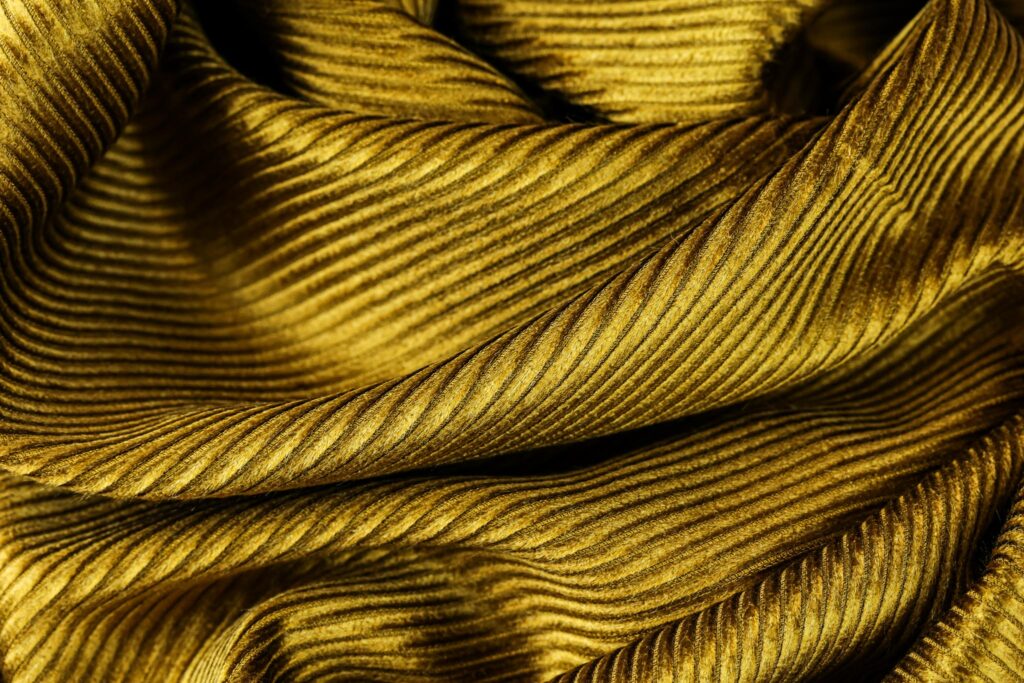
It is celebrated by stylists and designers for its elegance and timeless appeal: it is velvet, a versatile and unique clothing fabric that has been interpreted over and over again in original ways, ranging from retro to modern styles.
But why is velvet still a must-have in fashion? Let’s discover together its history and characteristics, which still make it a unique clothing fabric of timeless elegance.
How Velvet is made
The origins of velvet are lost in time, but the first concrete traces can be found in the East, where it soon became one of the most precious fabrics, used both for clothing and for the furnishings of royal courts and high nobility. Velvet arrived in Italy around the 13th century: Venice, Florence and Genoa were the main centres of production.
Processing and types of velvet
Tradition and innovation come together in the different processes of velvet to achieve a great variety of styles and textures that make it truly versatile in the creation of garments, giving different and never predictable looks.
These are the main types, which are also part of the Pontex best-seller collections and differ in the different haircuts of the fabric:
Corduroy
It is characterised by relief lines on the surface, of different heights and sizes, which are formed during weaving and make it very special. The ribs can be of different widths, heights and sizes.
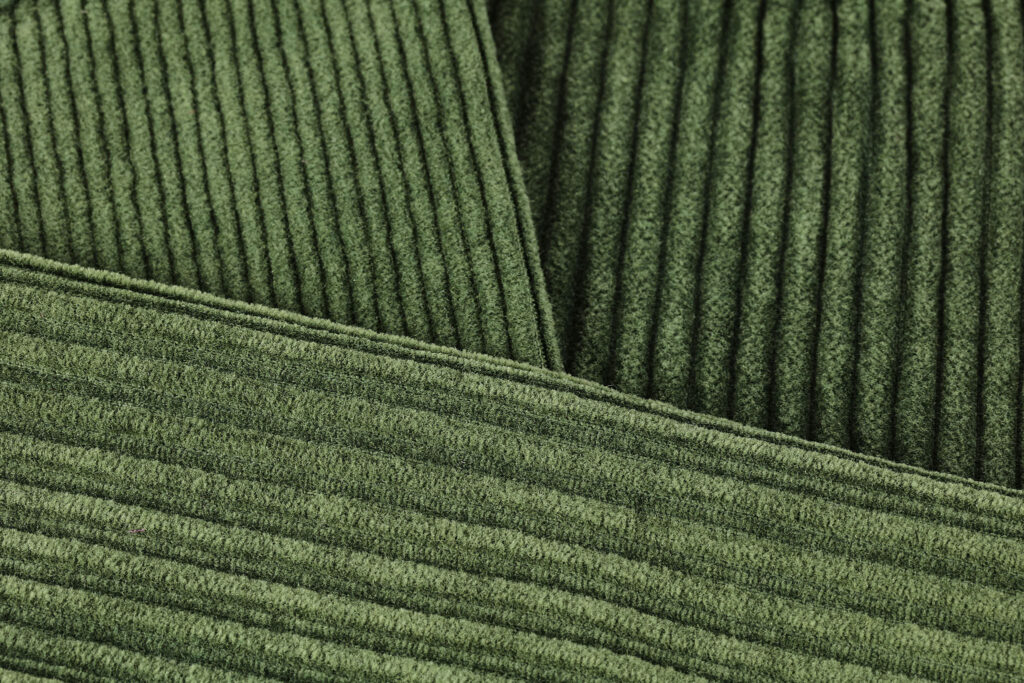
100% COTTON
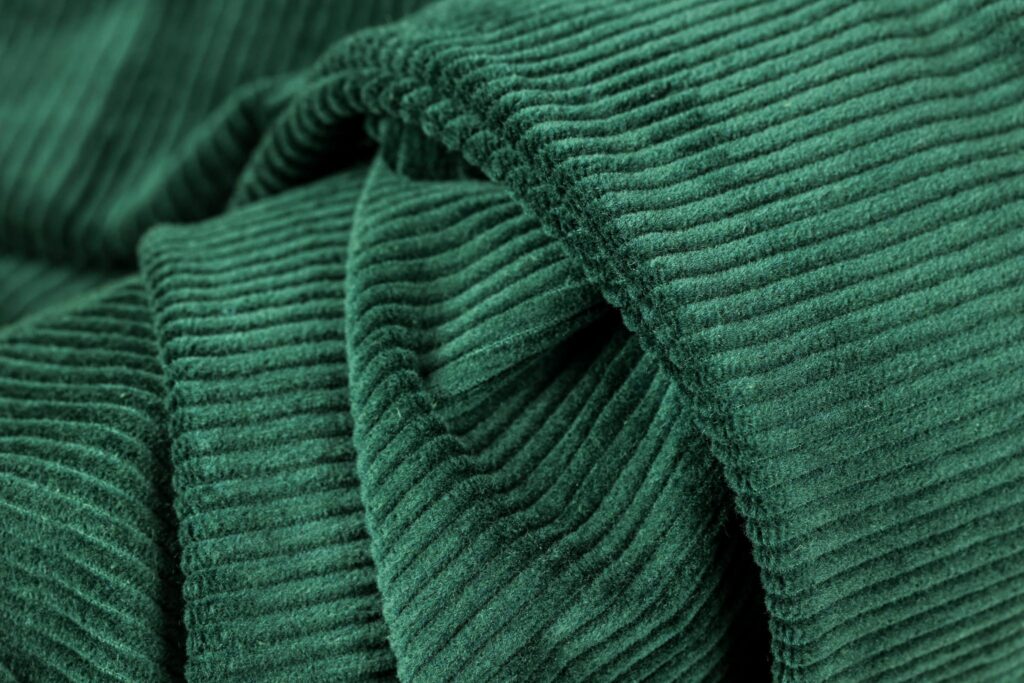
97% COTTON 3% ELASTOMER
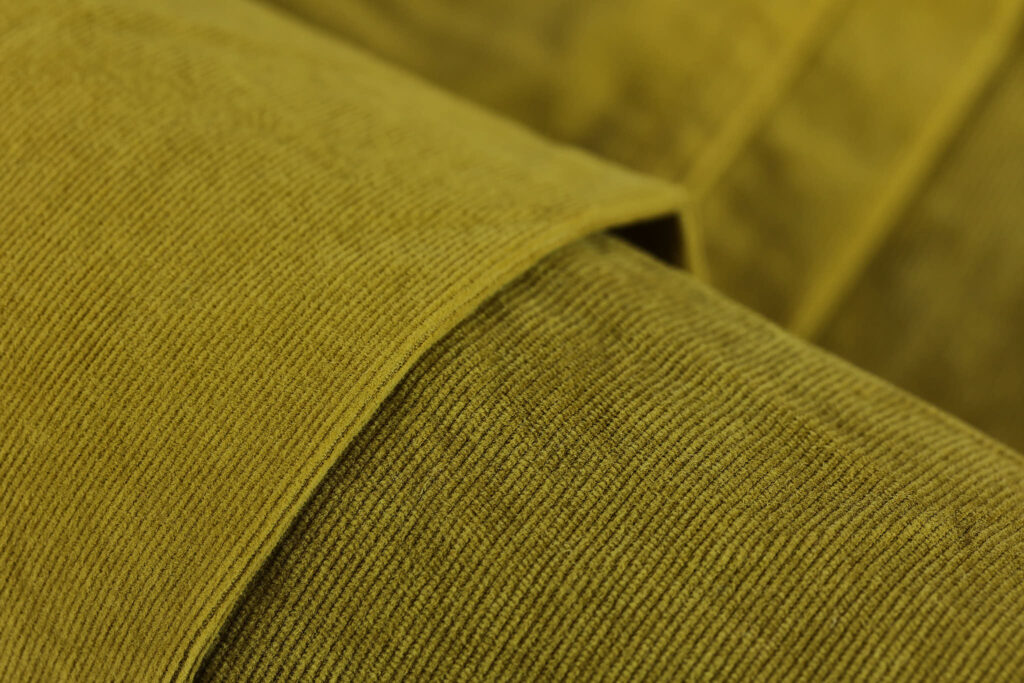
100% COTTON
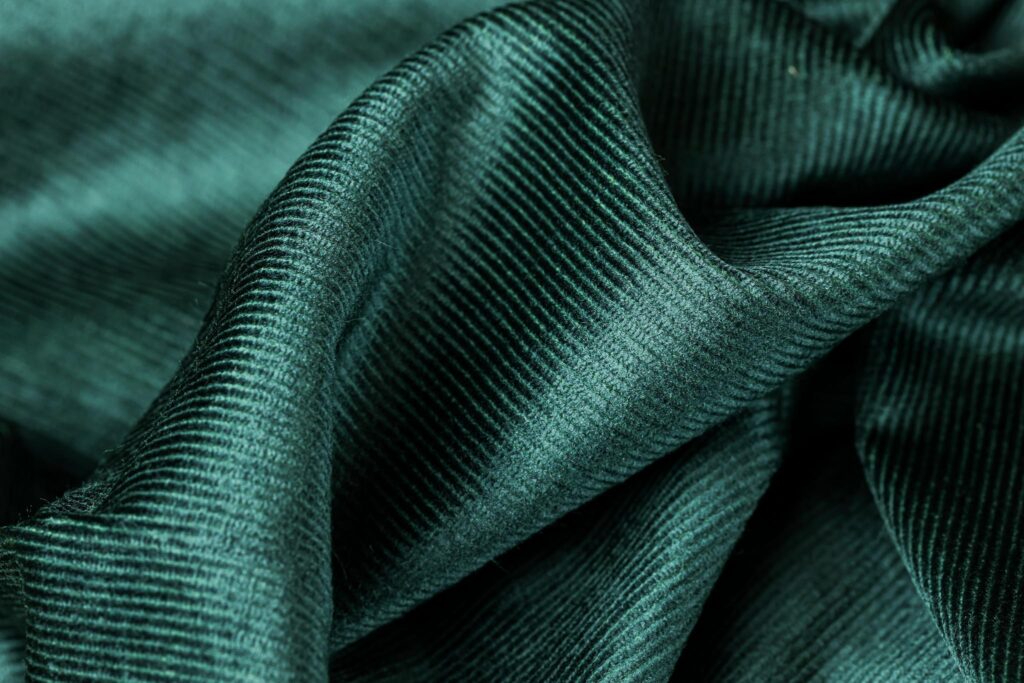
50% COTTON 48% RAYON 2% ELASTOMER
Corduroy velvet
Similar to corduroy, corduroy has thicker and more domed ribs, providing a unique texture and strength.
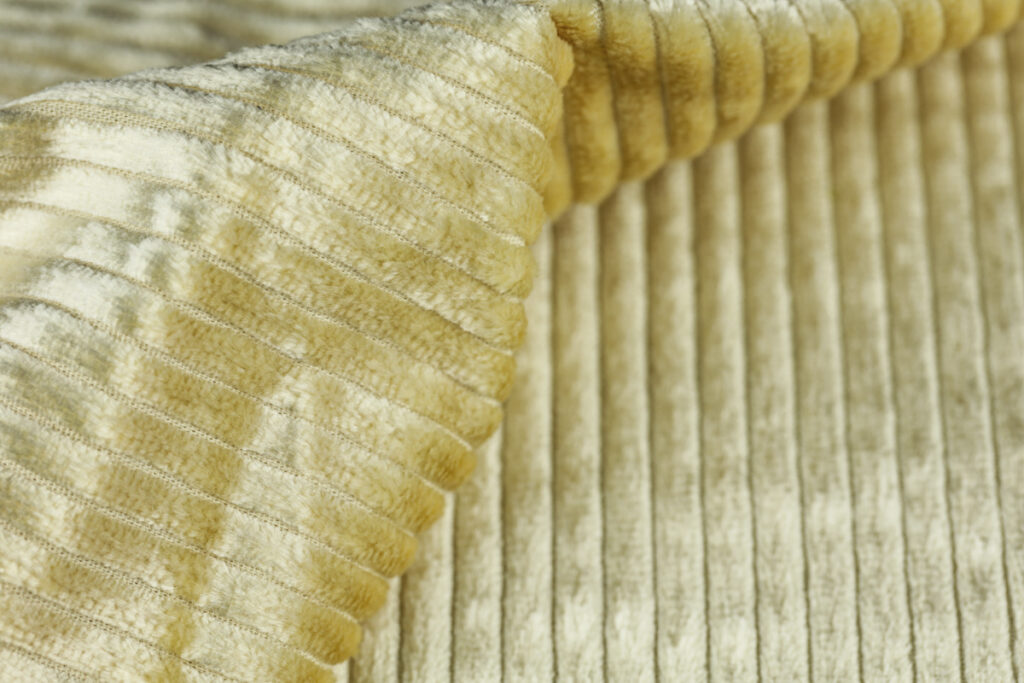
58% COTTON 40% RAYON 2% ELASTOMER
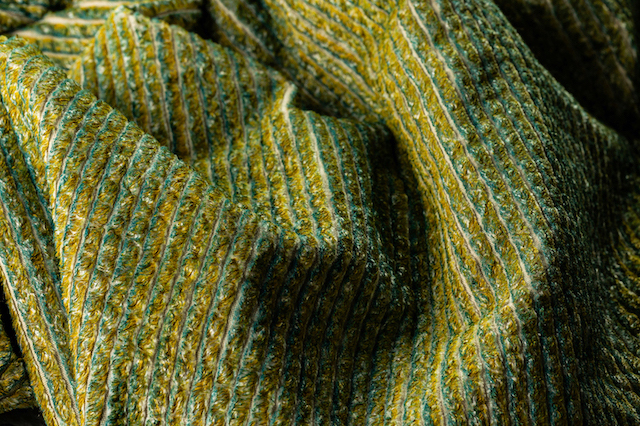
58% COTTON 40% RAYON 2% ELASTOMER
Velveton vel vet ( moleskin)
It is a variant of velvet with short pile, slightly less smooth than classic velvet. Warm and robust, it is often used as a variant on ‘traditional’ velvet (corduroy or smooth velvet) for winter clothing. The very robust hand is reminiscent of suede.
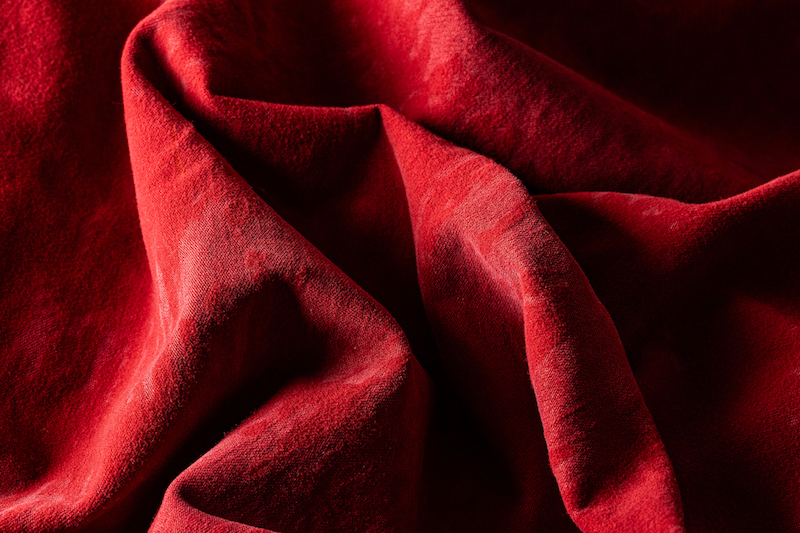
97% COTTON 3% ELASTOMER
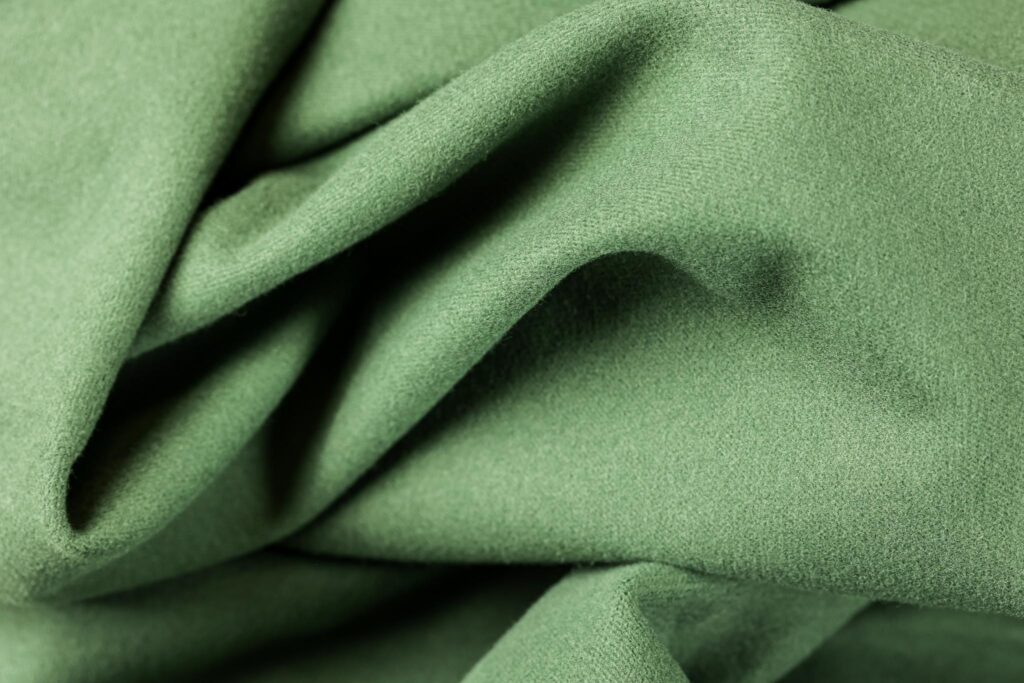
97% COTTON 3% ELASTOMER
Smooth velvet
The most classic, characterised by a uniform, very glossy surface and fluid softness.
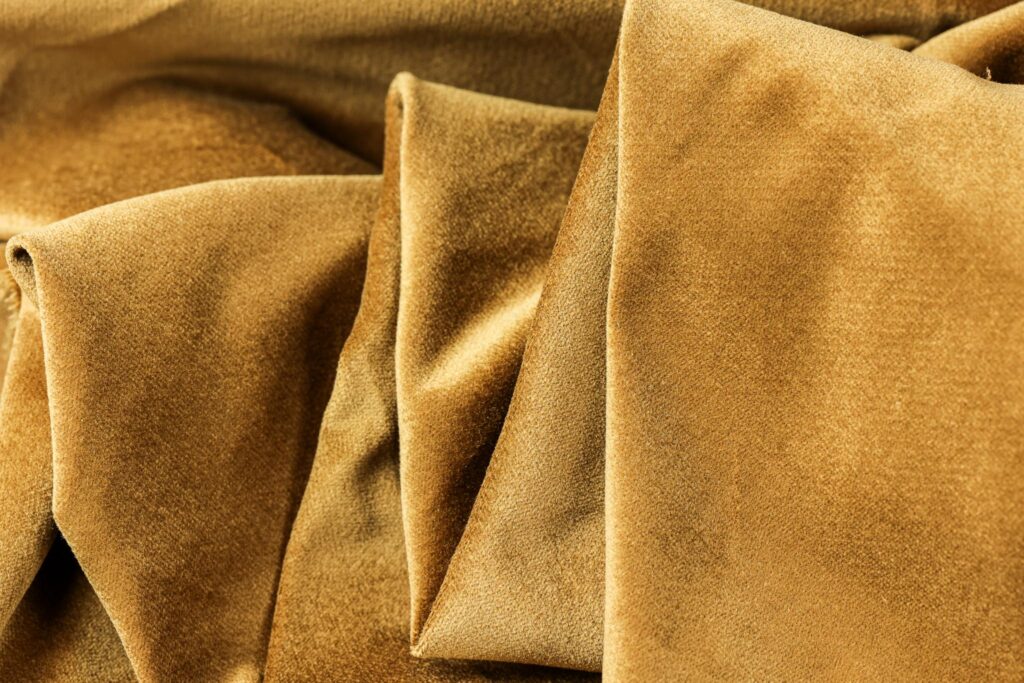
97% COTTON 3% ELASTOMER
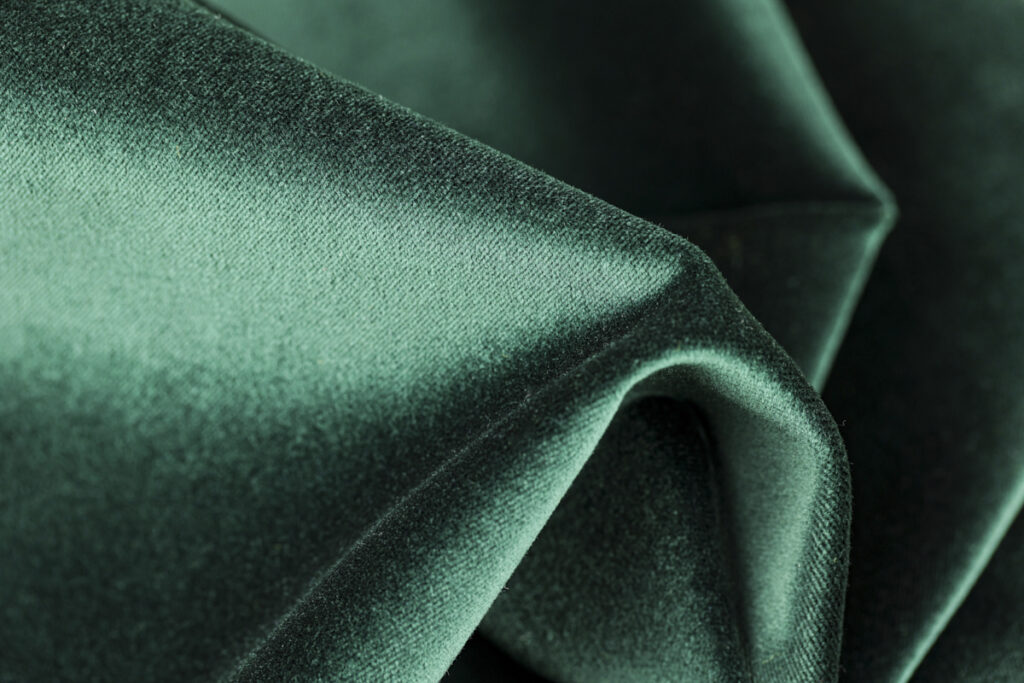
100% COTTON
Velvet dévoré
A velvet known for its intricate patterns, the workmanship leaves transparencies and creates a contrasting effect between treated and untreated areas.
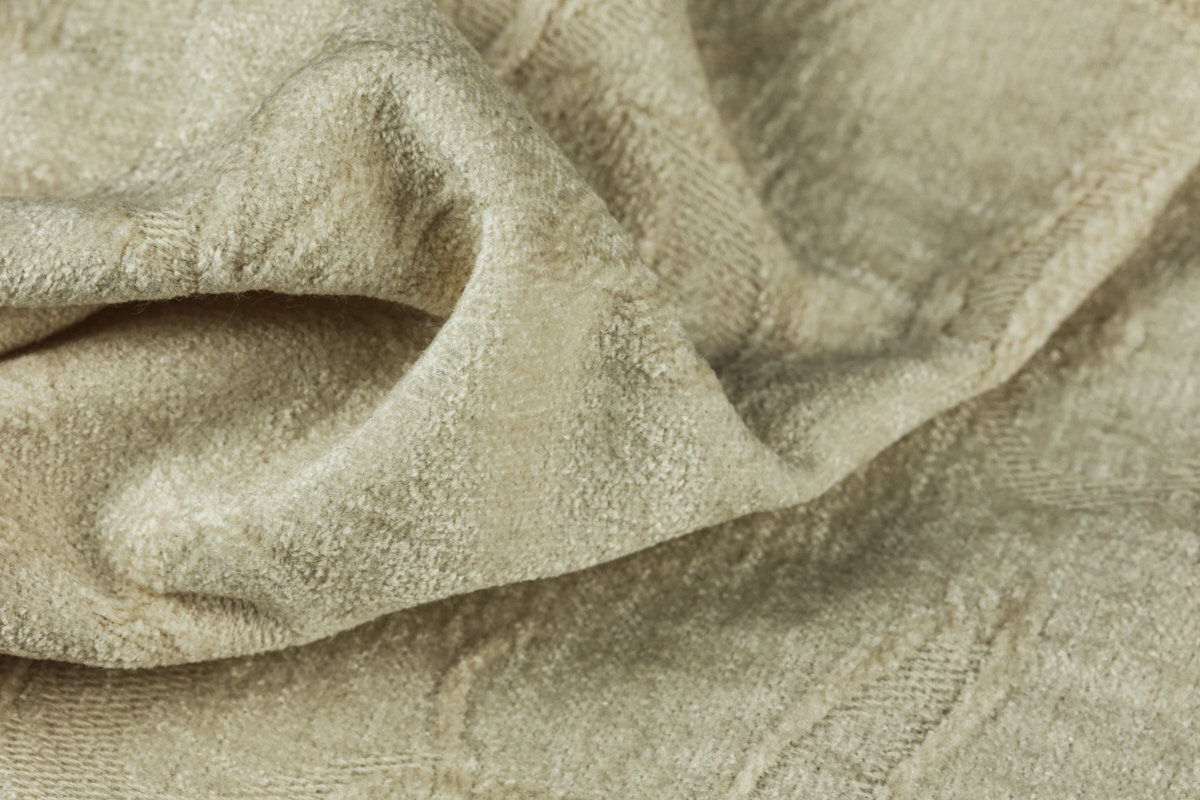
Jacquardvelvet
The special weaving technique gives a three-dimensional effect, because the decorative motifs are woven directly into the fabric structure, instead of being printed or embroidered on the surface.
Velvet froissé (or crushed)
It is characterised by its irregular, wavy appearance, which is achieved through the applied finishing: this process gives the fabric a unique three-dimensional texture, enhancing the contrasts between the shiny and matt areas.
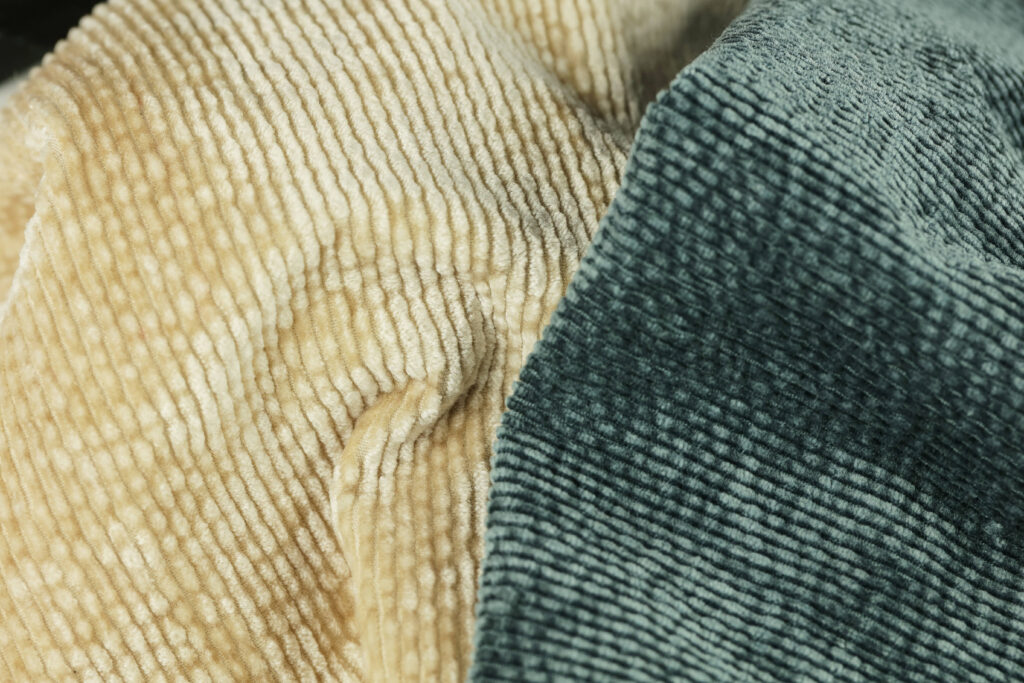
58% COTTON 40% VISCOSE 2% ELASTOMER
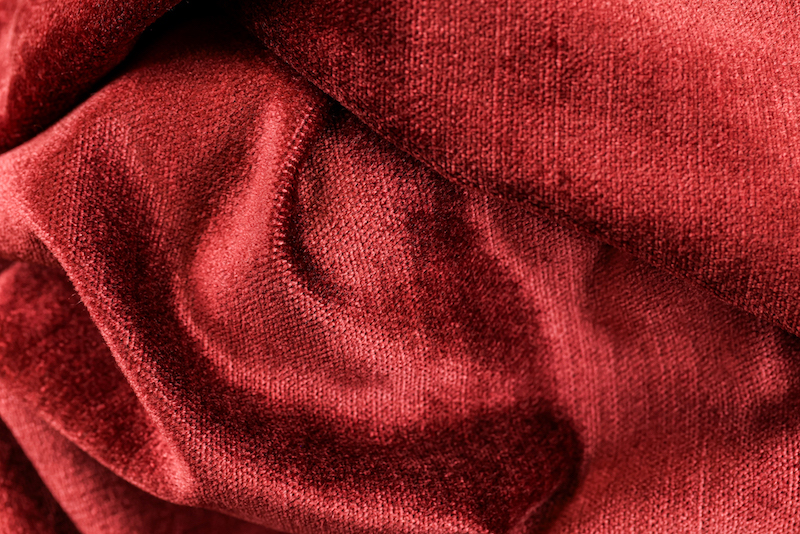
38% COTTON 50% VISCOSE 12% POLYAMIDE
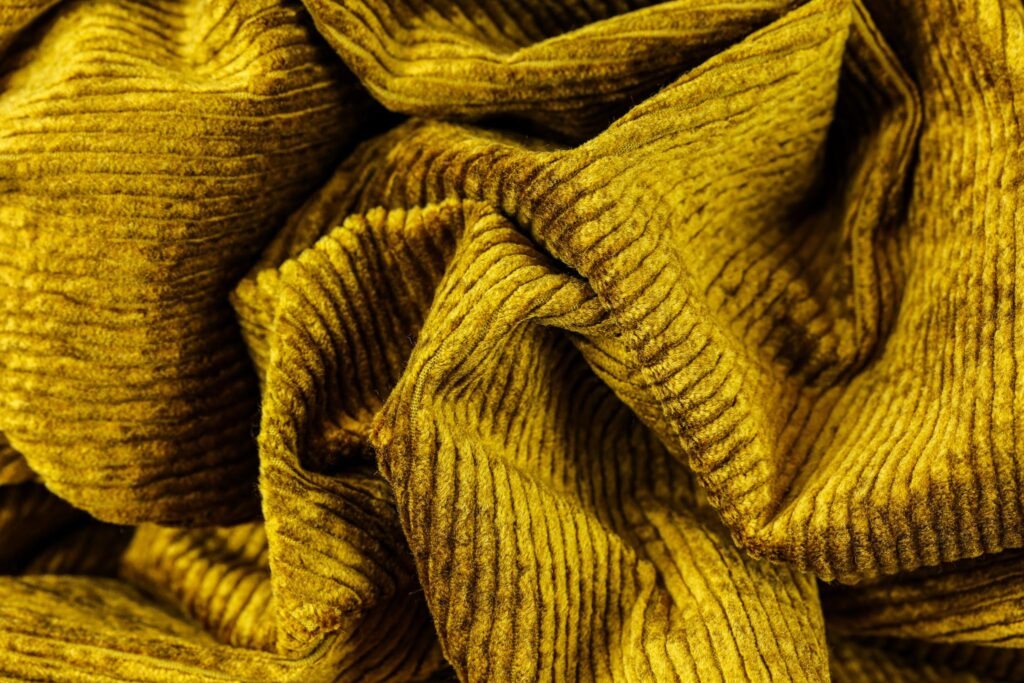
58% COTTON 40% VISCOSE 2% ELASTOMER
Each type of velvet, through its processing, tells a story: from the choice of raw material to the weaving technique and finishing, each step in the creation of this clothing fabric represents a balance between tradition and modernity.
Why is velvet so popular?
- is a full-bodied clothing fabric
- uniquely captures and reflects light
- is resistant
- never goes out of fashion
- you can wear it both for special occasions and in everyday fashion
- enables the creation of unique garments that last forever in the wardrobe, against fast fashion and wasteful fashion
- is durable, valuable and resistant
Why choose a velvet garment
Choosing velvet to make a garment means choosing a fabric that combines comfort, sensory quality, style, durability and value.
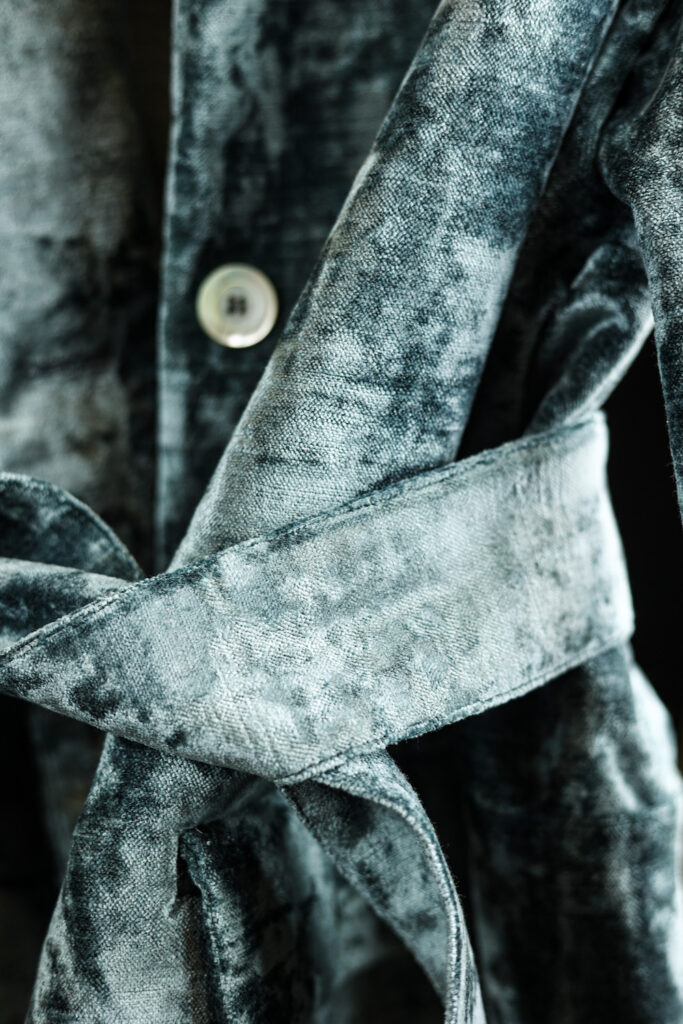
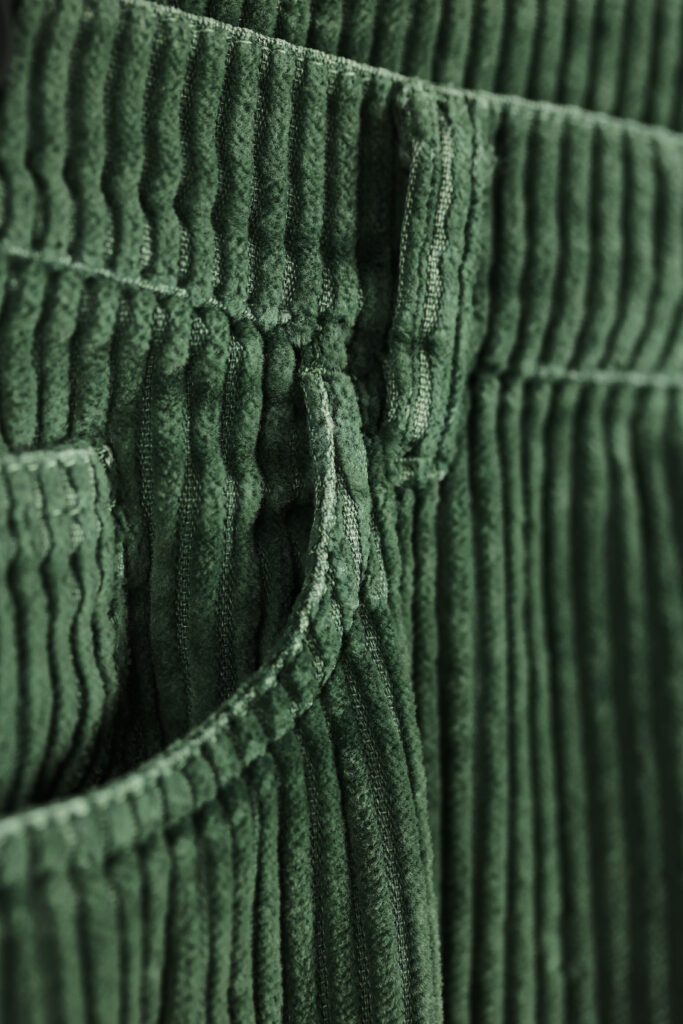
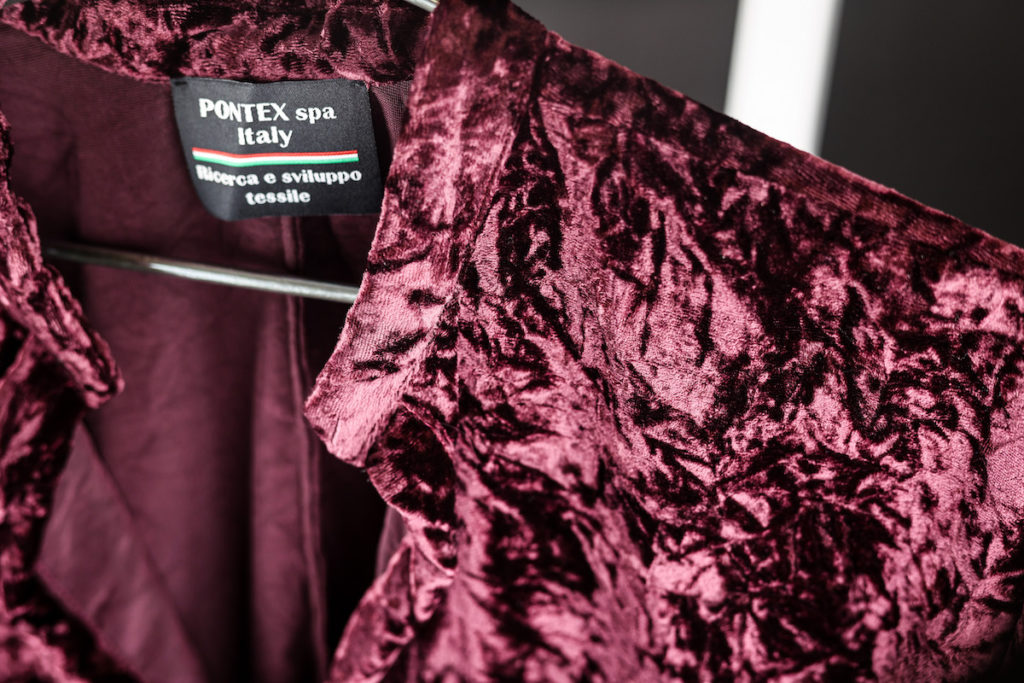
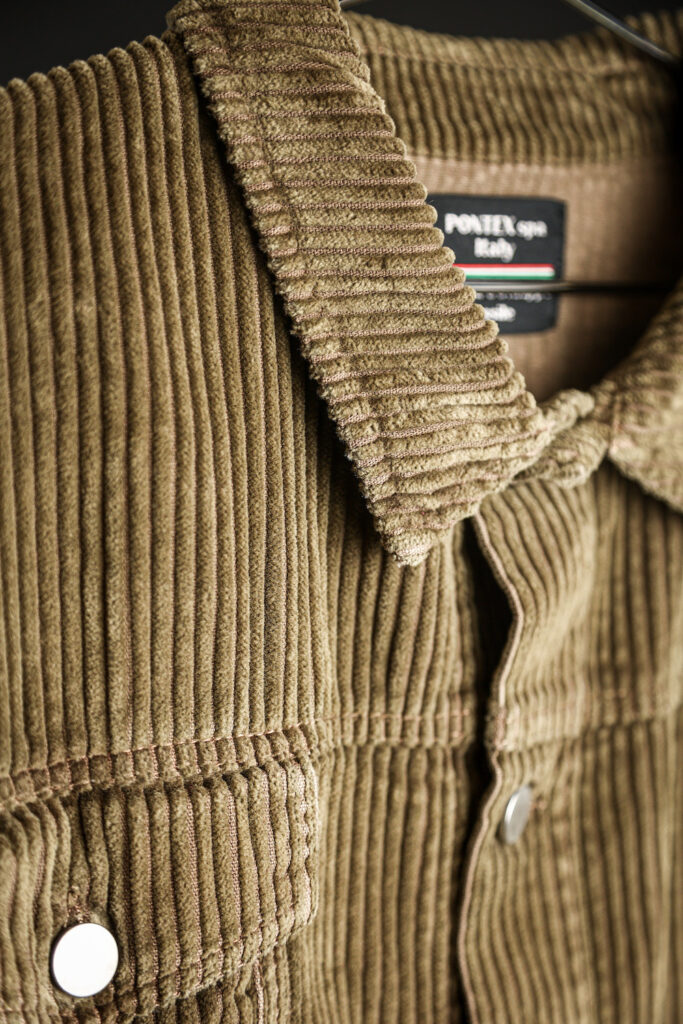
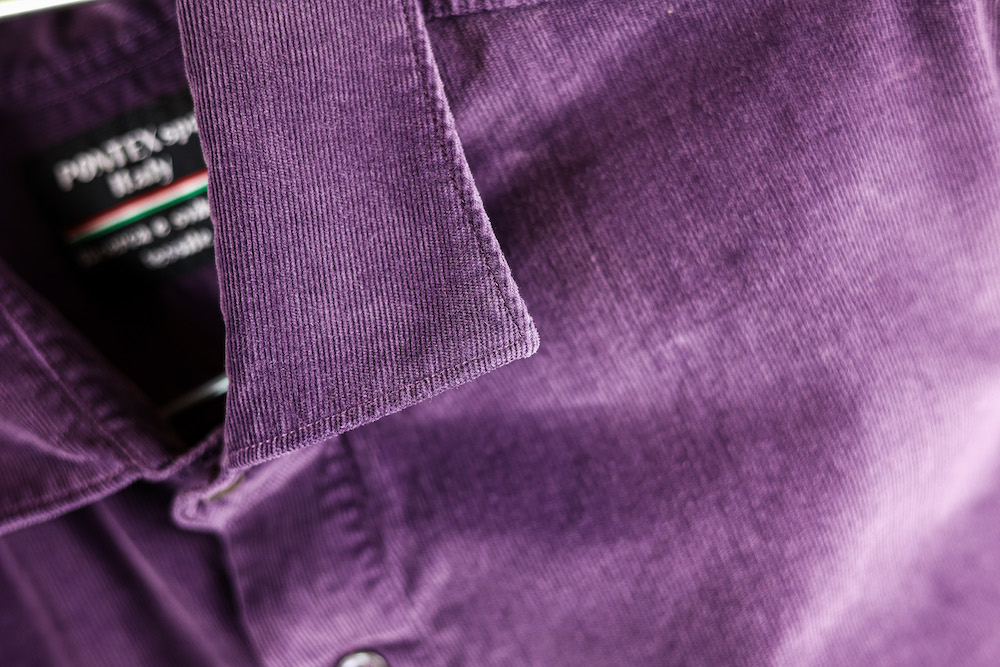
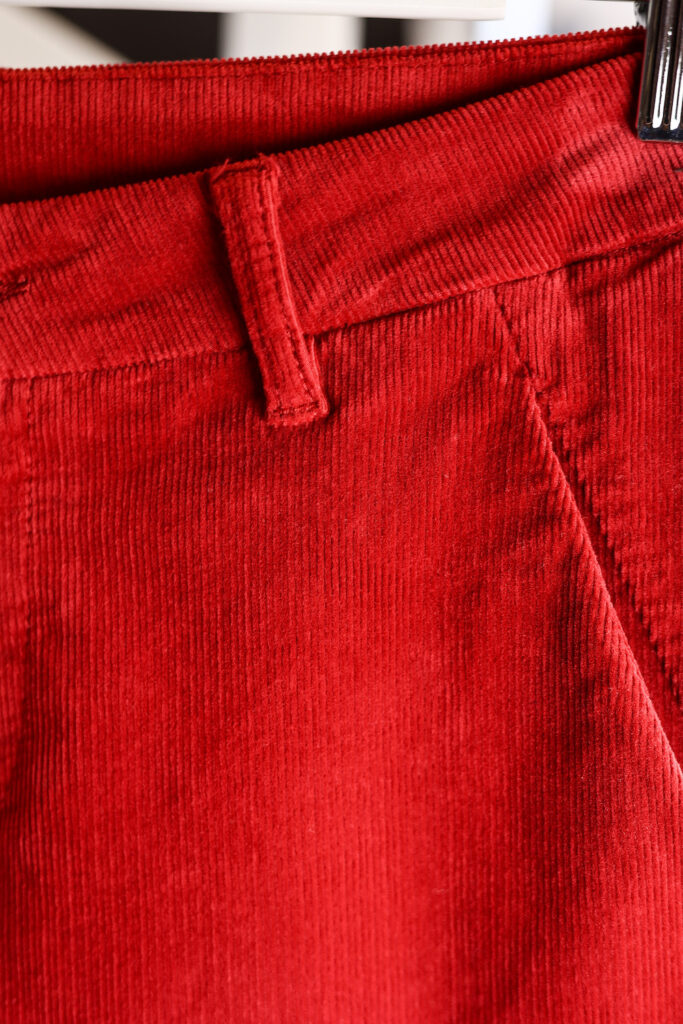
Whether it is an evening dress, a casual-chic jacket, or trousers for everyday wear, velvet is capable of transforming a simple garment into a sophisticated and distinctive piece. It is an extremely versatile clothing fabric, which suits both formal and more casual outfits, even when combined with simpler fabrics such as jeans.
In addition, velvet is soft and comfortable to wear, creating excellent thermal insulation.
Velvet in Pontex Collections
Velvet is one of Pontex’s best-selling garment fabrics, one of the “continuations” that the Modenese company offers. The Pontex Collections include countless declinations, from plain velvet to corduroy, from crushed velvet to moleskin. The Pontex signature velvets are obtained only from fibres of the finest quality: silk, cotton, viscose, modal, tencel, rayon some with the addition of a small percentage of elastomer to increase resistance and elasticity.
Attention is paid to the search for the best yarns, to the use of natural fibres and dyes with a view to sustainable innovation, as evidenced by a number of important GOTS, BCI, OCS and GRS certifications.
Pontex offers the best fabric base, which it has instock(stock service), and the best processing and finishing – in collaboration with trusted Italian subcontractors – to obtain a unique, unrepeatable and customisable product.
Thanks to the tailor-madeapproach, i.e. tailor-made according to the customer’s specific needs. This means creating a unique velvet that is ‘designed’ from the ground up to meet the customer’s unique needs, objectives and requirements.
The velvets and moleskins of the Pontex Collections embody the company’s values: unique, functional and durable fabrics born from a constant search for new raw materials and finishes.
Would you like to discover how Pontex clothing fabric collections can make a difference to your brand and shape your ideas?
Explore our catalogue and customisation services at www.pontexsrl.com or contact us here
